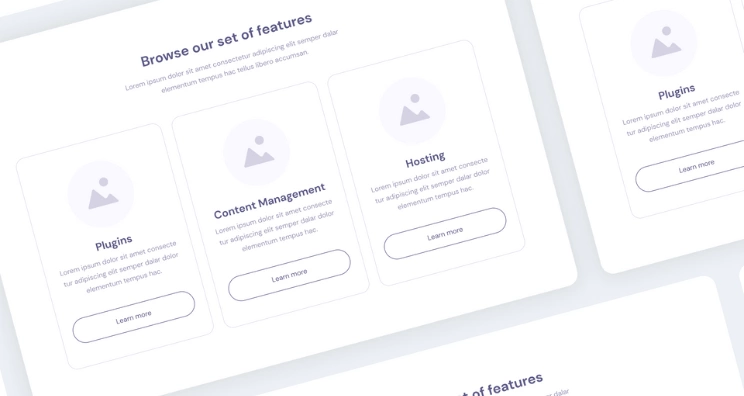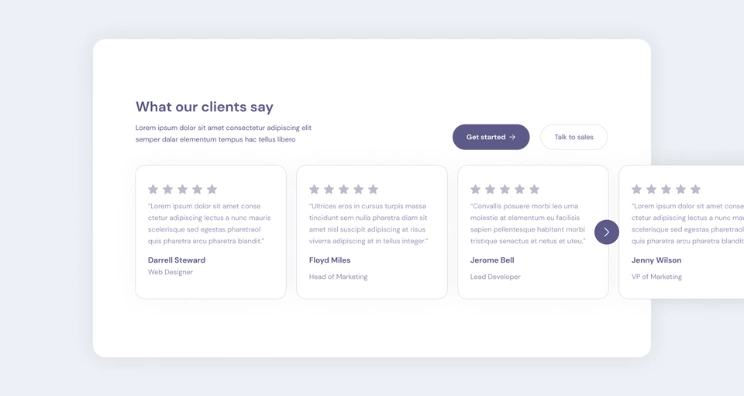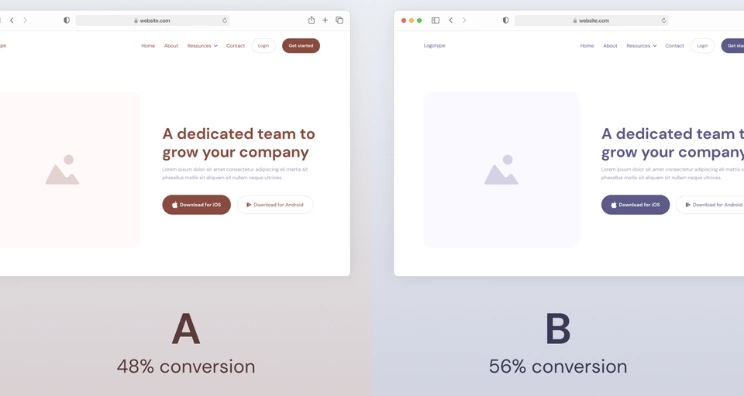A landing page for lead generation needs to always be built around the importance of lead generation to a successful business. It’s how you reach potential customers early in their journey and it allows you to prove your trustworthiness and value until they’re ready to make a purchase. At that point, if you’ve done your job right with the lead generation landing page, that purchase will be with you.
Best practices for making the best landing page for lead generation
Before you start building your lead capture landing page, there are a few things you’ll want to make sure you have figured out. Let’s take a look at the top three:
1. Understand the five different types of leads and leads pages
Leads can be broken down into five main types: new, working, nurturing, unqualified, and qualified. Your goal is to take new leads – people who are just getting to know you and your product – and transform them into qualified leads, also known as sales leads, which are people who are ready to do business.
Working and nurturing leads are the steps between new and qualified — this is where you build your relationship with potential customers. And unqualified is a straight-up dead end (the type we want to avoid).
A qualified lead is much farther along the sales funnel than a lead that you’re nurturing and will have its unique needs. Similarly, the kind of messaging you want to a new lead to see will be completely irrelevant for a lead that is already qualified. This is why your leads pages will have to be based on the type of leads you’re targeting.
2. Set a straight-forward goal for your lead landing page
The best lead-gen landing pages know that they can’t do absolutely everything all at once. Instead, you need to set a simple, clear goal for your page to start turning visitors into leads.
Most of the people you’ll be interacting with will be “top of funnel” leads, which means they’re new to you and your business and you merely want to get them engaged enough to interact with your page and provide a little bit of information to you. If you can prompt visitors to give you their email, name, and number through a clear CTA (call to action), you’re well on your way to success.
3. Optimize your landing page for lead generation to showcase your value

No one likes to give out their personal information on the internet without a good reason. That means your lead landing page must do the best job possible at showcasing your value to visitors. That may mean stats that make you feel great (such as how many units you’ve sold) aren’t as important to these potential new leads as what you can do for them (like a special offer for joining the email listserv).
Put your potential leads’ wants and needs first and foremost and drill down into what specific value you can provide to them.
How to create a landing page for lead generation
Step 1: Brainstorm a solid offer for your leads page to grab visitors’ attention
The first step in creating lead generation pages is to take the time to think about what you can offer visitors on your pages.
Lead capture landing pages do best when they only ask for information from visitors as part of what can be considered a trade. Don’t just ask for their information and assume your product is a good enough reason on its own for them to give it.
Instead, decide what kind of incentive you’re capable of offering on your lead gen site. Is there a discount you can give? A free trial? Access to an educational newsletter? Whatever it is, make sure it truly is a bonus to visitors and put it front and center on your site.
Step 2: Write concise and engaging copy so your lead capture landing page speaks to your target audience
This might seem like a no-brainer, but it’s something you’re going to want to pay close attention to. While your design and imagery will draw the eye and get your site visitors to pause on your landing page, leads will mainly come because of your copy.
The words you use are especially crucial on a landing page because they are the means by which you’ll collect information from leads. Visitors to your site are much more likely to share the info you need if your copy is:
- Clear: Be specific about what you want and what you can offer. Don’t hide behind vague language that can turn off potential leads.
- Friendly: Your copy should feel welcoming and inviting – like you’re having a casual chat. If you’re too aggressive, that can also turn people away.
- Engaging: You should have a clear hook, something that grabs people’s attention and pulls them in.
It might seem like a lot, but if you can master it, it’ll do wonders for your conversion.
Step 3: Provide plenty of social proof on your lead generation landing page

As you would for an event landing page, you’ll want to turn to social proof (reviews, industry awards, endorsements, etc.) as a way to help convince visitors to your B2B lead generation landing pages to convert. So what does that mean in this instance?
Put special emphasis on quotes from satisfied customers as well as any quotes from industry experts about your product. This helps illustrate to prospective leads that they can trust you and that they can believe your claims about your product’s benefits.
The most effective customer testimonials will do more than copy a quick quote – they’ll have photos, names, and job titles to bring that customer to life. That will help your site visitors see themselves in your customers, which brings them one step closer to becoming just that!
Step 4: Create a simple form on your lead gen page to collect information
The form where you collect your potential leads’ information is perhaps the most important piece of your lead generation landing page. This is where, if you’ve followed our guide so far, your site visitors will enter their info for you. But just because they’re ready to share that info, it doesn’t mean you can’t still lose them!
If your form is clunky, asks too many questions, and is frustrating to fill out, people simply won’t do it. You’ll want to make sure your form asks only for the minimum amount of information required for your company. Employ checkboxes and buttons when necessary to make filling in the form even easier.
Step 5: A/B test your lead gen pages

Once you have all the information you need on your site and it’s designed as best you can, you’ll want to employ A/B testing. This means choosing a variable or two to change on your site and then segmenting your audience so you can compare how the two versions perform.
Some great options here are to change up your CTA, swap out your imagery, or tweak your headline. You can then collect data on how the changes compare against your original version and learn more about how to optimize your site for maximum conversion!
Build your landing pages for lead generation today with Zoomforth
Now that you know how to create a landing page for lead generation, it’s time to choose where to host it. We think the answer is clear: Zoomforth!
With all the tools you need to create, A/B test, publish, and host your lead gen landing page, Zoomforth is an excellent choice. Enhanced analytics make it easy to understand exactly what visitors are doing on your lead capture landing pages, and how you can lead them toward conversion.
Even better? Zoomforth goes out of its way to make sure its site builder is super easy to use. It can even program in your brand colors to make sure your pages are always on brand, no matter who’s building them! They even offer advanced customer support and custom training. Interested? Request a demo today to see for yourself.
Photo by Austin Distel on Unsplash



